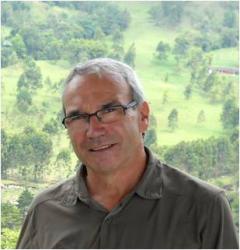The gathering of the South American Neotectonic Group took place at the Universidad Católica de Chile in Santiago as a departure point of the scheduled activities of the “Inventory of Hazardous Structures of South America” project, a topic layer of the South America Risk Assessment (SARA) effort (see previous post at here). This convocation also hosted a meeting of the INQUA SAm-GeoQuat IFG and the 1311 Project.
-
Workshop of the SARA Project (South America Risk Assessment) on “Inventory of Hazardous Structures of South America” & Workshop of the 1311 INQUA project. Santiago, CHILE, 17-20 November, 2014
2014-12-03 | in Meeting -
New project for inventory and mapping hazardous faults in South America launched
2014-09-05 | in EarthquakeIn 2013 the Global Earthquake Model (GEM) –www.globalquakemodel.org – published seven Requests for Proposal covering topics related to the compilation of basic datasets as well as the creation and calculation of an updated probabilistic seismic hazard input model for South America. This initiative is now named the South America Risk Assessment Project (SARA).
Five consortia of South American researchers responded to this request and submitted proposals for the Hazard Component of SARA. These proposals has been recently endorsed by GEM and will constitute different datasets or topic layers for SARA. They include databases on historical and instrumental seismicity, hazardous faults (Quaternary deformation), tectonic geodesy and ground motions. more
-
Quaternary shortening at the Andean orogenic front (31°-33°S), Argentina: Current issues and challenges
2013-08-05 | in Centerfault, UncategorizedQuaternary shortening at the Andean orogenic front (31°-33°s), Argentina: Current issues and challenges
Carlos Costa1, Emilio Ahumada1, Benjamin Brooks2, Andrew Meigs3, Lewis Owen4, Thomas Rockwell5, Lindsay Schoenbohm6, Carlos Gardini1, Héctor Cisneros1, Fabricio Vázquez1, 7
- Universidad Nacional de San Luis, Argentina. costa@unsl.edu.ar
- U.S. Geological Survey, USA
- Oregon State University, USA
- University of Cincinnati, USA
- San Diego State University, USA
- University of Toronto, Canada
- CONICET
Outstanding exposures, new data, and novel hypotheses developed during the last decade have turned the frontal deformation zone of the Andes between 31°S and 33°S (Fig. 1) into one of the most promising areas worldwide for improving the understanding on mountain building processes and seismic hazards related to thrust tectonics.
Because the Andes are relatively narrow in these latitudes, the geodetic signal in the backarc is dominated by the subduction zone locking process at the Chile trench. Nonetheless the geodetic analysis provides some useful constraints on the location and rates of modern backarc shortening, though not necessarily on the vergence. It is currently understood that backarc shortening occurs at rates of ~4-5mm/yr over a zone that is ~30km wide (across-strike) (Brooks et al., 2003; Kendrick et al., 2006). In the north (31°- 32°10° S) this would imply that the west-vergent, Eastern Precordilleran structures are the most likely to be active, while south of 32°10° S the east-vergent structures in the Southern Precordillera belt are likely to be most active (Fig. 1).

